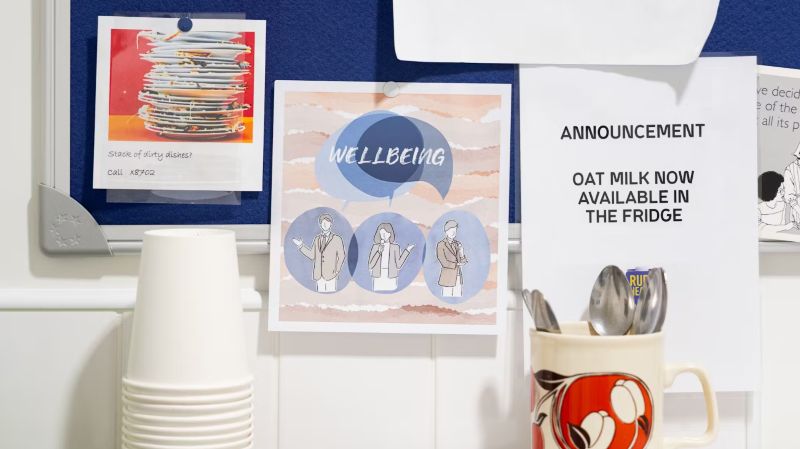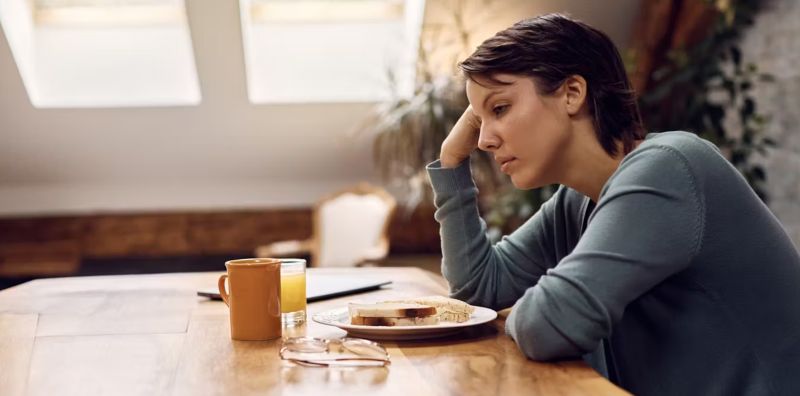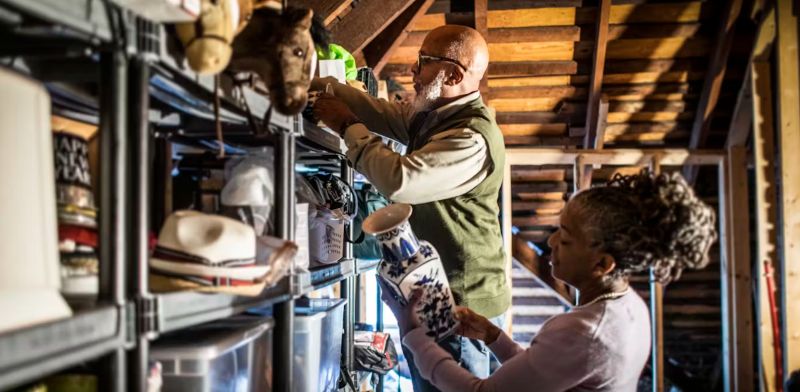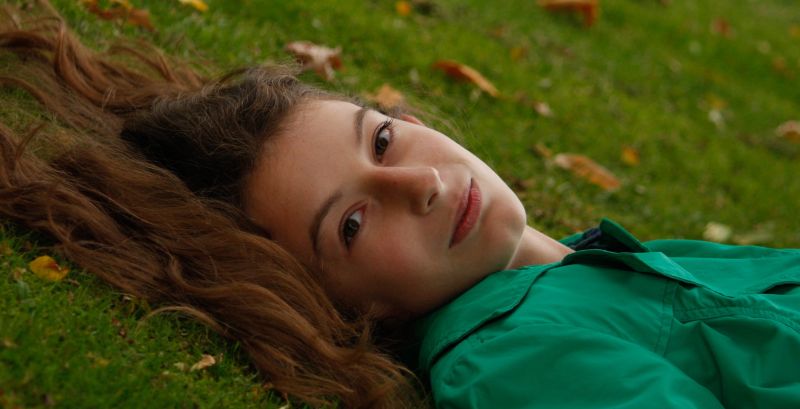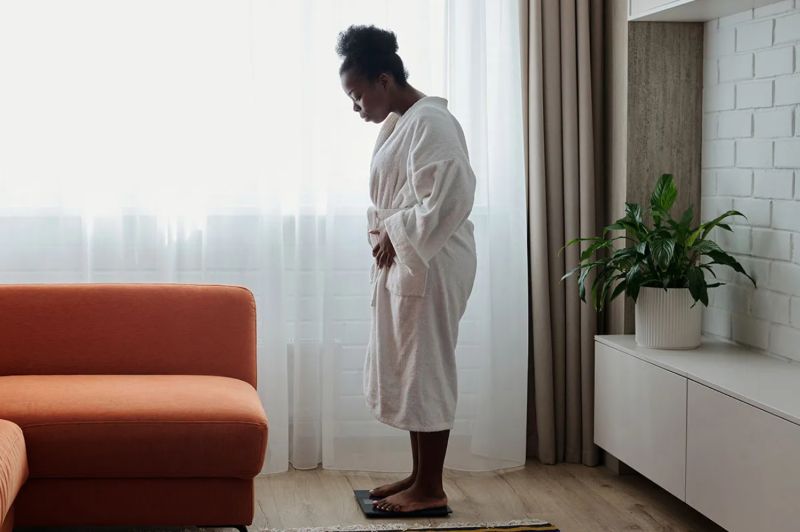
All illustrations by Ella Baron.
As schools respond to the 30 percent increase in demand for counseling, artist Ella Baron gives a glimpse inside some students’ experiences.
By Krista Karlson
The students are seated in neat rows. Left elbow in, right elbow out, head slightly tilted. Then, a figure out of line: lying down, arms flailing. Drowning.
Illustrator Ella Baron conducted a series of interviews with college students, many who had suspended their studies because of mental health concerns, to create a series of sketches about the mental health crisis at colleges, listening to the recordings as she drew. The images, published in June 2017 in The Guardian, are as pointed as they are perplexing, parsing the intricacies of mental health in ways that provide a unique access point for viewers.
Baron says for the students she interviewed, social isolation was a key driver of poor mental health. “People had lost the support structure at home, and then in university they hadn’t quite found one yet,” she says. This led to depression, anxiety, and eating disorders, which in turn isolated students even further. But labeling students can be alienating for both the individual and outsiders who don’t understand what it’s like, she says. “I was trying for a visual that was more complex.” She hopes the images will help destigmatize the issue and make it more accessible in a nonreductive way.
Last year, Baron, 22, graduated from Oxford University, where she had struggled with her own mental health. It was isolation, coupled with a paralyzing fear of failure, that Baron heard again and again from students. According to a 2015 report, between 2009 and 2015 the number of students seeking counseling services increased nearly 30 percent.
Schools are trying to respond.
The University of Washington center for Advancing Integrated Mental Health Solutions (AIMS) has created a “collaborative care” model that creates a physical and mental health plan for an individual. “One of the most promising approaches … is the systematic involvement of family members, peers, community health workers, and community-based organizations,” the center says. Many universities offer peer counseling services in which students are trained to listen, ask questions and refer their peers to other campus resources. Yale and Drexel universities both offer confidential, anonymous peer counseling helplines that students can call most nights of the week.
Rutgers University offers community-based counseling, embedding counselors within academic departments and cultural centers. Instead of walking across campus to a single building designated as a care center, this system integrates individualized therapy plans into students’ lives within their particular communities on campus. Counselors are trained to assess the community’s needs as well as the individual’s needs; they offer group therapy.
“The causes and the solutions aren’t clear-cut,” Baron says. “It’s not like the flu, so eat more spinach and take your medicine.” Effective institutional changes will be grounded in an understanding of students’ lived experiences.
Baron’s sketches are a rare invitation to explore these perspectives and the tension, nuance, and possibility they hold. “Even if it isn’t a better way, it’s a different way, and that in itself is a good thing,” she says.

1. “There’s a claustrophobia about student life; you work and eat and drink and dance and sleep together. It gives everything a painful intensity—at times it’s like you’re almost too alive. But living back to back can leave you feeling so alone; I hate hearing the music coming through my neighbor’s wall.”

2. “I remember doing my laundry when I was really down and it took me four hours just to get off my chair. That’s the thing with depression—there’s so much apathy—so much absence of the person who you really are. Sometimes I’d get the sense that my younger self would be disappointed. It’s not even that I was suicidal—it just felt inconceivable that life was still going forwards when I’d opted out.”

3. “Every day I relapse a little—it depends on who I’m with, the colour of the sky. I set myself little to-do lists: go for cake with mum; I made myself a snakes and ladders board; I turn the voices in my head into cartoon villains. But the question remains: how can we become world leaders if we don’t even think we deserve full-fat yoghurts?”

4. “Mathematicians would say that sleep is a ‘singularity’; something that is totally separate to all other experience. I see going to sleep as a logical problem that I can strain to solve, and so I forget that this is when sleep is most difficult to find.”

5. “Before going to sleep I’d plan my whole day in five minute intervals. Don’t think, ‘Write your dissertation’ say ‘you’re going to read this book and write 500 words’—it’s like that but with your entire life: 7:30 wake up, 8 get out of bed and head to the bathroom, 8:05 brush teeth etc. The routine helped counter the illogical nature of anxiety; it gave me something stable to follow.”

6. “When I first got bad depression I stopped playing the violin. Instead I watched six series of ‘Dance Moms.’ I saw one episode and thought that was just shit; then I watched the next 119 hours. I occupied myself with inane things that took repetition; knitting, weaving bracelets, baking. Focusing on these simple physical activities was easier that confronting whatever the fuck was going on in my head.”

7. “Sometimes I feel small within myself; like only the very smallest piece of a Russian doll. The outer shells are always smiling—even if I’m not.”

8. “‘You’re going to feel like you’re drowning and if you’re not then you’re doing it wrong.’ That’s what my tutor says to her undergraduates at the beginning of their degree.”

9. “We were brought up breathing the internet; Myspace, Bebo, MSN, Facebook, Twitter, Tumblr, Snapchat, Emoji, Instagram. Who needs to go into town when you have Amazon or Ocado just a click away? Why go to the library when all the articles are online? Who wants to go clubbing when Tinder can find you the perfect one-night stand? Who even needs real friends.”

10. “It’s like the panic is so overwhelming there’s no room for anything else—like a flood rising up your body—like you’re unfolding. I developed a habit of having a panic attack before every essay deadline. My friend used to joke that he’d wear his comfy jumpers on those days—because when it started he’d just hug me until it was over.”
Originally published by Yes! Magazine, 07.30.2018, under a Creative Commons Attribution-NonCommercial-NoDerivatives 4.0 International license.
